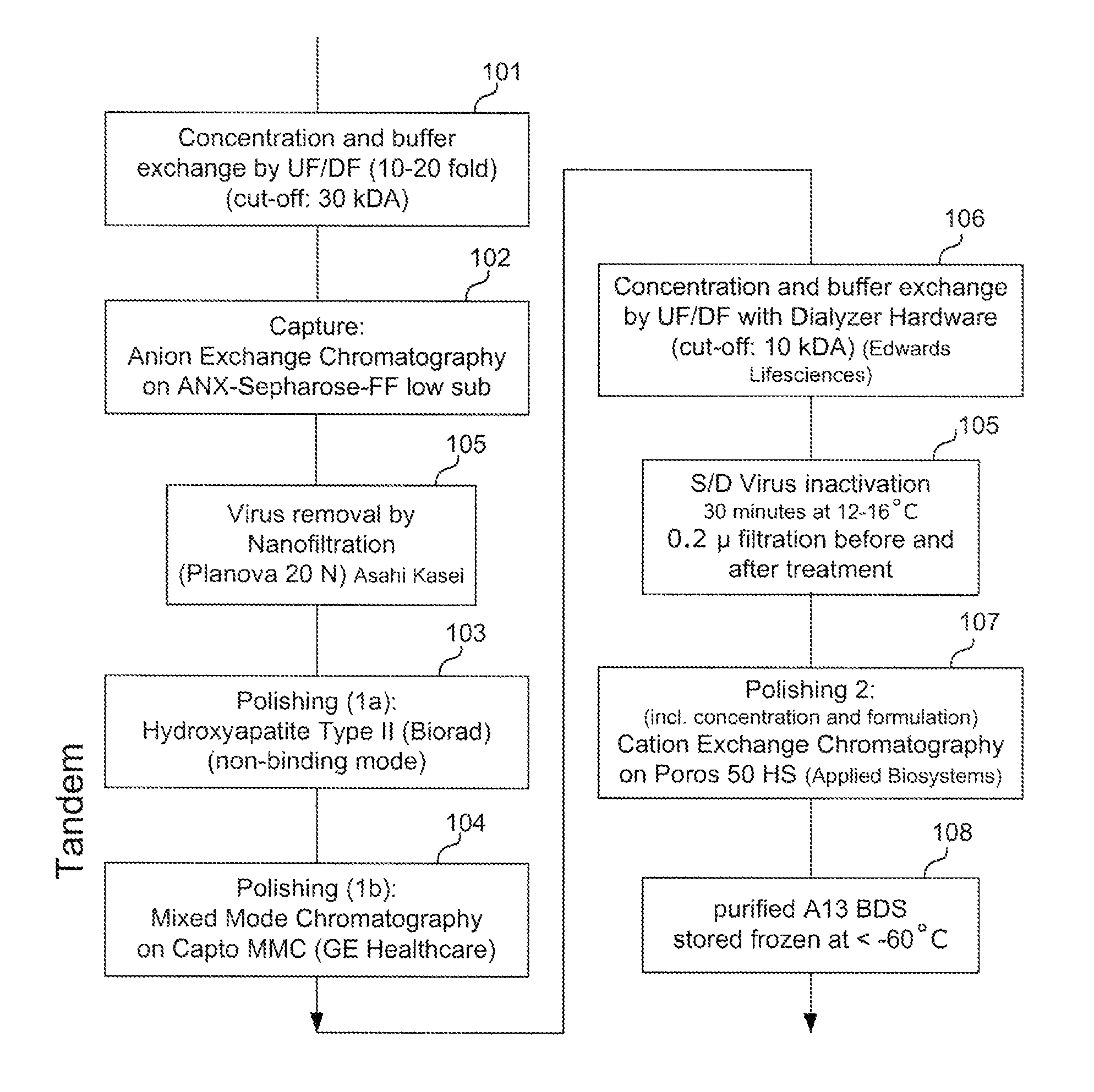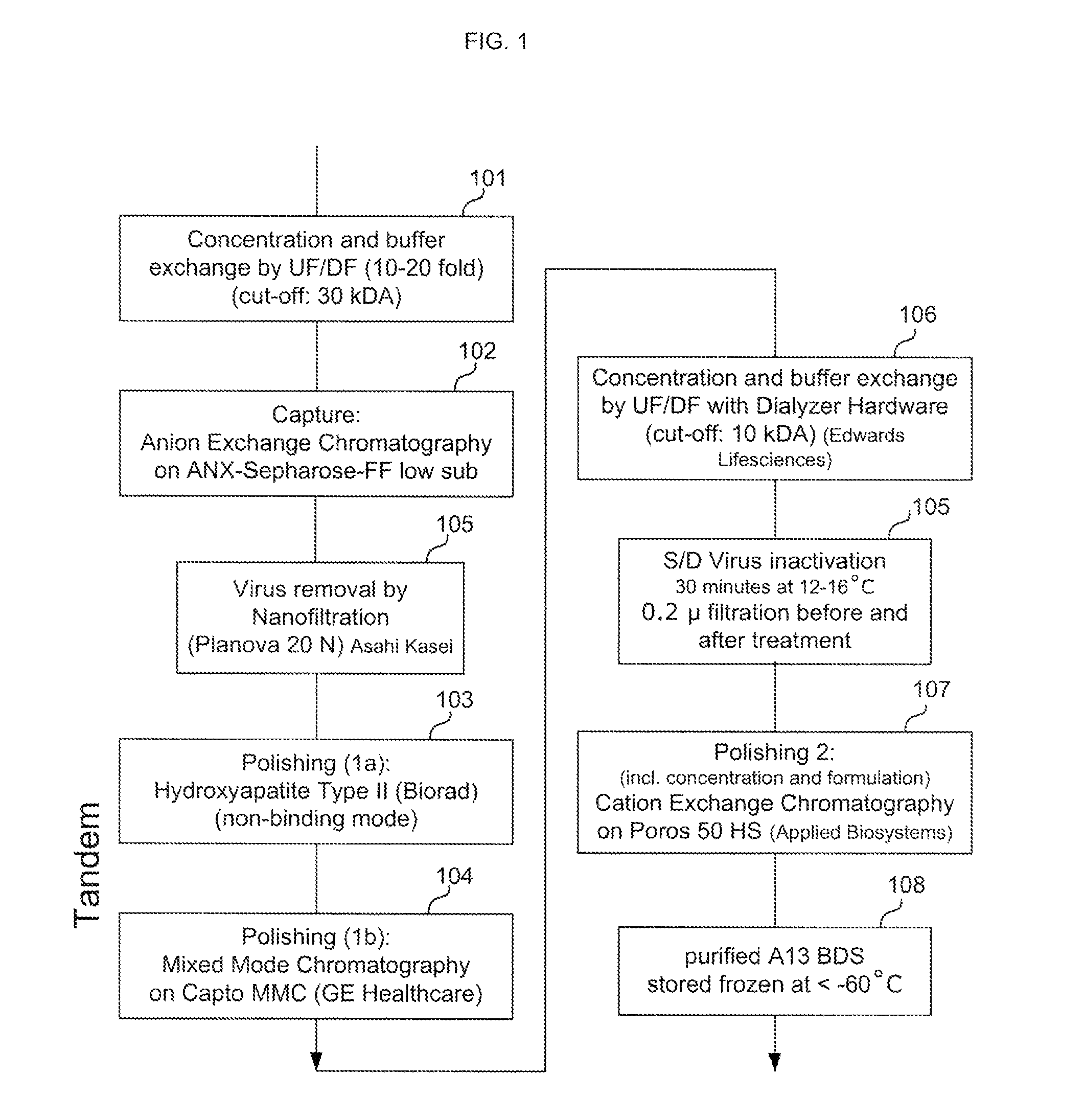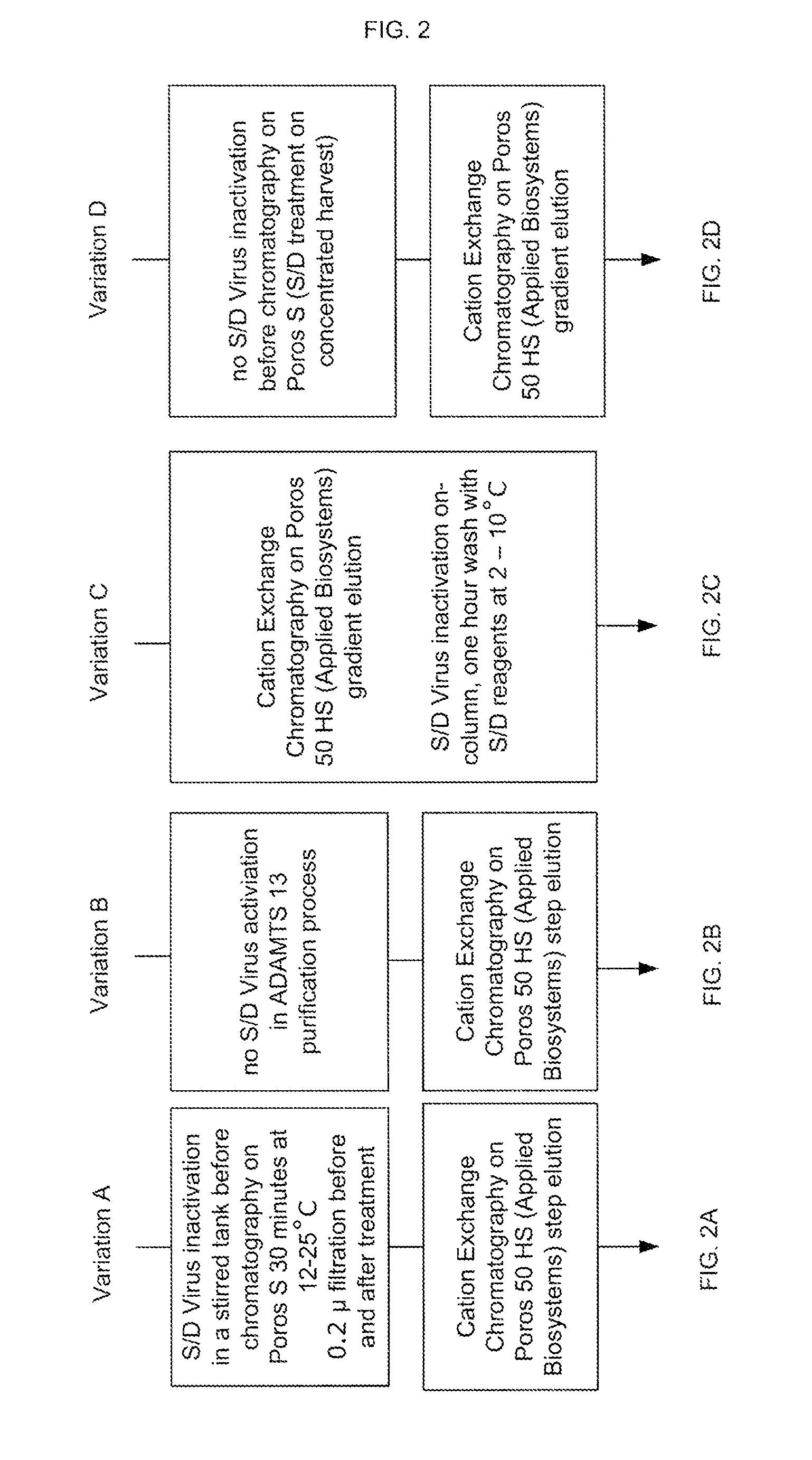Methods of purifying recombinant ADAMTS13 and other proteins and compositions thereof
a technology of adamts13 and other proteins, applied in the direction of peptide/protein ingredients, on/in inorganic carriers, extracellular fluid disorders, etc., can solve the problems of reduced blood flow, intravascular hemolysis and schistocyte formation, damage to the red blood cell membrane, etc., and achieve the effect of reducing the formation of protein aggregates
- Summary
- Abstract
- Description
- Claims
- Application Information
AI Technical Summary
Benefits of technology
Problems solved by technology
Method used
Image
Examples
example 1
[0127]FIG. 1 provides an exemplary method for purifying ADAMTS13 protein, according to certain embodiments of the invention as disclosed herein. In the Example provided, recombinant ADAMTS13 protein is purified from supernatant collected from culturing CHO cells comprising a recombinant ADAMTS13 nucleotide sequence. In this example, the sample is cell culture supernatant comprising about 2 units / ml (approximately 2 μg / mL) ADAMTS13 protein.
[0128]As shown in FIG. 1, a sample comprising ADAMTS13 and non-ADAMTS13 impurities may first be subject to an optional pre-enrichment preparation: (a) as shown in step 101, the sample may be concentrated by ultrafiltration (about 10-fold to about 20-fold) and the buffer exchanged by diafiltration (molecular weight cut-off of about 30 kDa); and (b) as shown in step 102, the ADAMTS13 protein can be bond to and eluted from an anion exchange resin, prior to further enrichment.
[0129]Pre-Enrichment Preparation of the Sample
[0130](a) Pre-Enrichment Ultraf...
example 2
[0172]FIG. 2 provides a summary of various conditions that can be used with cation exchange chromatography step 107 of FIG. 1. In particular, comparison of the ADAMTS13 product obtained from the various runs indicates that the conditions of FIG. 2C reduce contaminating aggregates.
[0173]As shown in FIG. 2A, variation A is a combination of viral inactivation using solvent-detergent (S / D) treatment, as discussed in more detail below, followed by a cation exchange chromatography on Poros S applying a step elution. As shown in FIG. 2B, variation B involves cation exchange chromatography on Poros 50S, with step dilution, but without being preceded by virus inactivation. Both variations A and B can be performed according a procedure outlined in Table 9.
[0174]
TABLE 9BufferFlowvolumerate(CV)Buffer Composition(cm / h)ObservationsActivation52 M NaCl50Equilibration620 mM MES Acid, 30 mM50NaCl, pH 6.0 (room temp.)Productabout 12S / D treated and diluted32Column load max. 6loadingproduct solutionmg A...
example 3
[0185]Experiments at lab scale, using 100 L fermenter scale, were performed with the on-column solvent-detergent virus inactivation, to determine potential impact of this procedure on the performance of cation exchange chromatography step 107. The data are presented in Table 12.
[0186]
TABLE 12CHO HCPYield Poros S*SpecificimpuritySolvent-% A13activityng CHOng CHOAggregatesdetergent% A13FretsUnits / mgHCP / UnitHCP / mg%%%SampleprocedureAgUnitsA13 AgA13A13 Agmultimersdimersmonomer1Solvent-991006960.493469.77.083.3detergenttreatmentimmediatelybeforechromatographyon Poros S(variation A)2no solvent / 1331548940.585191.34.694.1detergenttreatment(variation B)3Solvent-89959310.605611.02.396.74detergent871179050.393541.03.795.3treatmenton-column(Poros S)(variation C)5Solvent-65937640.211630.81.597.76detergent811088450.383240.71.597.87treatment at661317410.312310.21.198.7the concentratedharvest(variation D)*Yields above 100% reflects an assay problem with the chromatographic load fraction on Poros 50S...
PUM
| Property | Measurement | Unit |
|---|---|---|
| conductivity | aaaaa | aaaaa |
| time | aaaaa | aaaaa |
| diameter | aaaaa | aaaaa |
Abstract
Description
Claims
Application Information
 Login to View More
Login to View More - R&D
- Intellectual Property
- Life Sciences
- Materials
- Tech Scout
- Unparalleled Data Quality
- Higher Quality Content
- 60% Fewer Hallucinations
Browse by: Latest US Patents, China's latest patents, Technical Efficacy Thesaurus, Application Domain, Technology Topic, Popular Technical Reports.
© 2025 PatSnap. All rights reserved.Legal|Privacy policy|Modern Slavery Act Transparency Statement|Sitemap|About US| Contact US: help@patsnap.com



